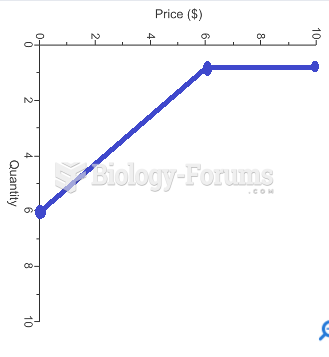This topic contains a solution. Click here to go to the answer
|
|
|
Did you know?
HIV testing reach is still limited. An estimated 40% of people with HIV (more than 14 million) remain undiagnosed and do not know their infection status.
Did you know?
There are more sensory neurons in the tongue than in any other part of the body.
Did you know?
When blood is exposed to air, it clots. Heparin allows the blood to come in direct contact with air without clotting.
Did you know?
Approximately 25% of all reported medication errors result from some kind of name confusion.
Did you know?
More than 150,000 Americans killed by cardiovascular disease are younger than the age of 65 years.







